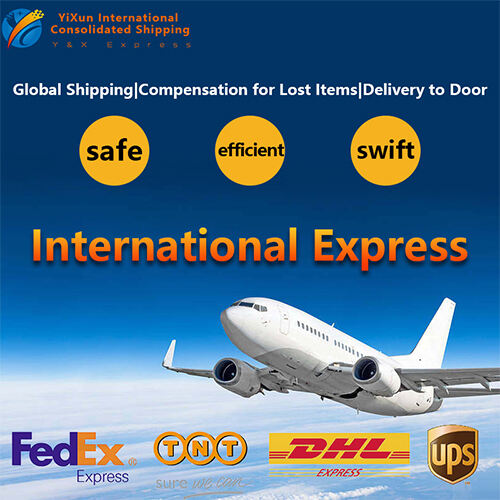Pengangkutan kargo udara kini telah menjadi sebahagian penting yang tidak terpisahkan dalam perdagangan dan perniagaan antarabangsa. Di sini, kargo udara sangat penting dalam banyak industri kerana ia boleh mengangkut barang dengan pantas melalui jarak yang jauh dalam industri tersebut. Walau bagaimanapun, kelajuan dan keberkesanan kargo udara mestilah berkadar langsung dengan piawaian keselamatan dan keamanan yang tinggi. Artikel ini bertujuan untuk menonjolkan langkah-langkah berbeza yang telah diletakkan untuk menjaga barang-barang anda semasa penerbangan.
Proses Penyaringan Am
Satu strategi besar yang berjaya dalam perlindungan kargo udara adalah penyaringan yang betul dan pantas. IATA menerangkan bahawa syarikat penerbangan dan kargo udara menggunakan teknologi seperti skaning X-ray, pengecual hidupan kimia dan juga Kecerdasan Buatan untuk menyemak paket bagi bahan-bahan berbahaya. Setiap item harta, sama ada dokumen atau peralatan, melalui banyak penyemakan sebelum diterima untuk diangkut oleh kapal terbang. Penyaringan ini bertujuan untuk memeriksa adakah terdapat barang terlarang, letupan atau barang berbahaya yang boleh menyebabkan masalah semasa perjalanan.
Selain itu, terdapat langkah-langkah yang ditempatkan di mana sesiapa sahaja yang menangani kargo mesti menguasai cara mengenal pasti ancaman dan bagaimana bertindak jika sesuatu diperhatikan. Gabungan teknologi dan pengawasan manusia membentuk rantai keselamatan yang kuat yang meningkatkan keselamatan pengangkutan kargo udara sehingga tahap tertentu.
Penyimpanan dan Penanganan Selamat
Apabila kargo melalui pemeriksaan awal, ia akan dibawa ke gudang storan yang selamat. Kawasan storan bagi item-item berkaitan kejayaan dilindungi oleh kamera pengawasan, kawalan akses dan alarma untuk menghalang penyusup. Terdapat pagar, kunci-kunci selamat dan pengawasan terus oleh pensuruh selamat untuk meningkatkan keselamatan kargo apabila ia berada di atas tanah.
Perhatian juga perlu diberikan dalam menangani kargo sepanjang proses untuk memastikan bahawa komoditi tidak rosak atau menjadi kurang. Kakitangan yang berkelayakan diharapkan mematuhi prosedur yang ditetapkan untuk menangani hantaran dengan cara yang barang-barang tidak dimusnahkan. Forklifts dan belt penghantaran sering dikaji semula dan diperiksa untuk pemecahan mekanikal yang mungkin menyebabkan impak berbahaya pada hantaran.
CoC dan Dokumentasi
Logistik kargo memerlukan adanya rantai penjagaan yang jelas didefinisikan dan dilaksanakan untuk barang-barang yang sedang dalam perjalanan. Syarikat penerbangan menyimpan rekod yang betul mengenai semua penghantaran melalui prosedur yang didokumentasikan untuk memastikan setiap gerakan dapat dilacak. Ini termasuk maklumat mengenai kandungan mesej, penghantar, penerima dan semua titik transit.
Tag RFID dan sistem berdasarkan GPS adalah beberapa contoh teknologi pelacakan yang memberikan status dan lokasi semasa kargo. Sistem-sistem ini memastikan setiap paket dipantau dengan rapat dan terdapat sangat sedikit atau tiada peluang kehilangan atau dicuri. Setiap kemungkinan menyimpang dari laluan yang direncanakan akan menyebabkan isyarat untuk penyiasatan segera.
Latihan dan Pengurusan Risiko Reputasi
Struktur undang-undang liberal diterapkan dalam perniagaan kargo udara berdasarkan perundang-undangan kebangsaan dan antarabangsa. Peraturan-peraturan ini adalah mandatori untuk memenuhi keperluan keselamatan dan keamanan penghantaran udara. Kebanyakan syarikat penerbangan mempunyai perjanjian dengan organisasi seperti Persatuan Pengangkutan Udara Antarabangsa dan Pentadbiran Keselamatan Pengangkutan USA untuk menyediakan kewujudan kepada piawaian tersebut.
Pelatihan aktif adalah satu lagi keperluan kerana staf perlu mengetahui peraturan atau teknologi baharu serta amalan yang diperbaiki. Ini adalah benar kerana latihan-latihan membantu staf bersedia menghadapi sebarang kecemasan dengan cara terbaik. Mereka membantu membasmi masalah berkaitan penanganan kargo dan membina sikap yang menyokong konsep keselamatan dalam proses penanganan kargo.
Inovasi Teknologi
Industri penerbangan secara amnya beradaptasi dengan pantas terhadap kemajuan teknologi, dan keselamatan kargo udara bukanlah pengecualian. Teknologi seperti; menambah nilai dan kebolehpercayaan untuk mendokumentasikan seluruh proses logistik dan membuatnya selamat.
Sistem keselamatan pintar yang menggunakan keupayaan kecerdasan buatan dan teknik pembelajaran mesin juga digunakan untuk mengenal pola yang menunjukkan adanya isu. Kamera keselamatan pada drone boleh digunakan untuk memantau facilites besar yang menyimpan penghantaran besar untuk meningkatkan keselamatan. Semua teknologi ini sentiasa berkembang, dan ia hanya akan memberi keberkesanan yang lebih besar dalam keselamatan dan keselamatan perniagaan kargo udara.
Upaya Kolaboratif
Oleh itu, isu keselamatan dan keamanan kargo udara melibatkan ramai rakan strategik termasuk syarikat penerbangan, pengawal selia, syarikat logistik dan penghantar. Transaksi seperti itu memberi maklumat utama yang mengalir di antara entiti-entiti yang disebutkan di atas untuk membentuk pendekatan tunggal kepada pengurusan risiko. Kerjasama dengan kuasa adat dan perlindungan sempadan melengkapkan usaha menuju kepada pengaturan pergerakan barangan di seberang sempadan.
Ini diteruskan kepada program majikan berganda yang secara objektif menentukan dan memberi akreditasi kepada postur keselamatan penghantar sebelum mereka dibenarkan mengangkut barangan melalui udara. Jenis-jenis program ini telah mencipta rangkaian yang boleh dipercayai yang meningkatkan kualiti keseluruhan rantai bekalan kargo udara.
Kesimpulan
Keselamatan kargo udara adalah faktor penting yang perlu dipertimbangkan terutama bagi syarikat penerbangan, pihak berkuasa pengawal dan penghantar. Dengan mengambil kira siri prosedur untuk penyaringan, penyimpanan dan penangangan yang betul, kerja kertas, mematuhi semua keperluan perundangan, menggunakan teknologi moden, industri cuba melindungi barangan anda sepanjang pengangkutan. Kerjasama bersama memberi perlindungan kuat terhadap risiko yang mungkin berlaku, yang membantu menghantar pelbagai jenis kargo melalui udara tanpa insiden.

 EN
EN
 AR
AR
 BG
BG
 HR
HR
 CS
CS
 DA
DA
 NL
NL
 FI
FI
 FR
FR
 DE
DE
 EL
EL
 HI
HI
 IT
IT
 JA
JA
 KO
KO
 NO
NO
 PL
PL
 PT
PT
 RO
RO
 RU
RU
 ES
ES
 SV
SV
 TL
TL
 IW
IW
 ID
ID
 LV
LV
 VI
VI
 HU
HU
 TH
TH
 TR
TR
 FA
FA
 MS
MS
 GA
GA
 BE
BE
 BN
BN
 LO
LO
 MY
MY
 HAW
HAW
 LB
LB
 GD
GD

